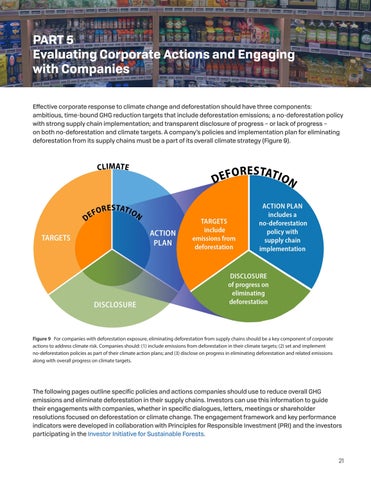PART 5 Evaluating Corporate Actions and Engaging with Companies Effective corporate response to climate change and deforestation should have three components: ambitious, time-bound GHG reduction targets that include deforestation emissions; a no-deforestation policy with strong supply chain implementation; and transparent disclosure of progress – or lack of progress – on both no-deforestation and climate targets. A company’s policies and implementation plan for eliminating deforestation from its supply chains must be a part of its overall climate strategy (Figure 9).
Figure 9 For companies with deforestation exposure, eliminating deforestation from supply chains should be a key component of corporate actions to address climate risk. Companies should: (1) include emissions from deforestation in their climate targets; (2) set and implement no-deforestation policies as part of their climate action plans; and (3) disclose on progress in eliminating deforestation and related emissions along with overall progress on climate targets.
The following pages outline specific policies and actions companies should use to reduce overall GHG emissions and eliminate deforestation in their supply chains. Investors can use this information to guide their engagements with companies, whether in specific dialogues, letters, meetings or shareholder resolutions focused on deforestation or climate change. The engagement framework and key performance indicators were developed in collaboration with Principles for Responsible Investment (PRI) and the investors participating in the Investor Initiative for Sustainable Forests.
21








